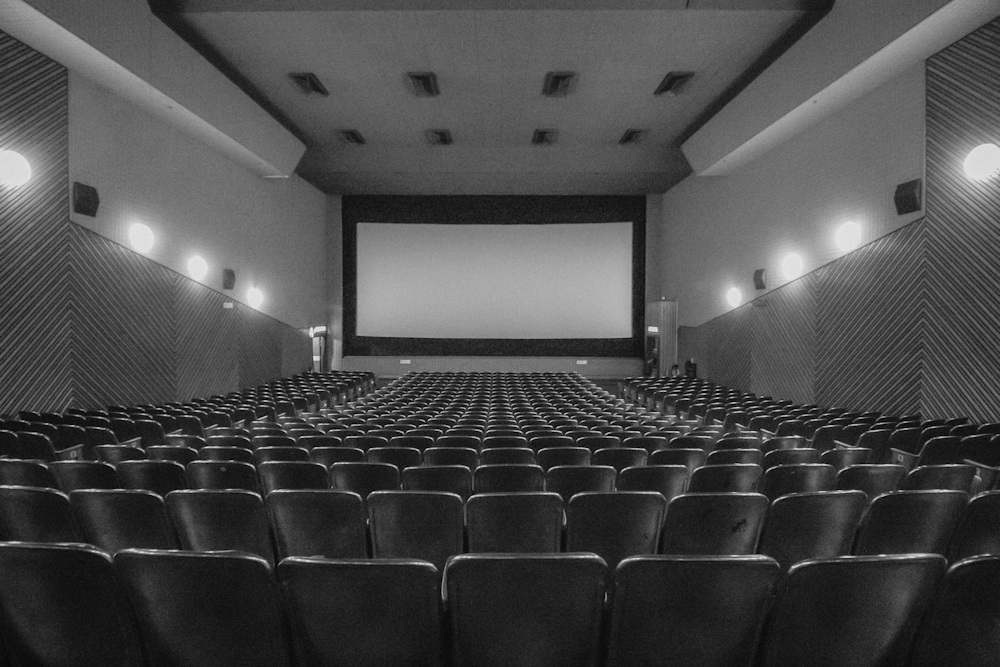by Sebastien GOULARD
What do Steven Seagal and Woody Allen have in common? Certainly not their filmography—but rather the fact that both, like other (often fallen) stars, have been co-opted by the Russian regime, a trend that has intensified since the invasion of Ukraine.
Steven Seagal’s affinity for Russia is well-known. The American actor obtained Russian citizenship (along with Serbian) in 2016, and since 2018 has served as a special envoy for Russian-American relations. However, Woody Allen surprised audiences this past summer by appearing virtually at the Moscow International Film Festival. While he distanced himself from support for the Russian invasion, he stated that artistic ties with Russia should not be severed.
Fallen Stars?
Woody Allen joins the ranks of Oliver Stone, Emir Kusturica, and French actress Fanny Ardant among global film figures who continue to perform or collaborate in Russia. Notably, these are often celebrities in decline, whose reputations are controversial in their home countries. For instance, Allen faces longstanding accusations of sexual abuse involving his adopted daughter, and at nearly 90 years old, he is nearing retirement.
Some of these personalities justify their affinity for Russia by positioning themselves as critics of Western capitalism—Oliver Stone, for example, produced a widely criticized documentary on Vladimir Putin in 2017.
While none of these individuals openly justify Russia’s invasion of Ukraine, their presence serves as a soft power tool for Russian authorities—both domestically (to portray Russia as not isolated, but rather supported by foreign voices), and especially on the international stage. These are figures who once inspired audiences and shaped cultural narratives. Their current involvement creates confusion among European and American publics, and deepens societal fractures—particularly generational ones—among those who grew up idolizing them.
Conversely, Russian authorities struggle to attract younger, more bankable actors and directors, who are wary of damaging their careers by engaging with a politically toxic regime—especially following the withdrawal of major Hollywood studios from the Russian market.
American Films in Russia
Since the invasion of Ukraine, Russia has tightened control over its domestic film industry. The Ministry of Culture now mandates that national filmmakers promote Russian patriotism in their works. Censorship of foreign films has also intensified, particularly against those not aligned with the regime’s “traditional values.”
However, the Russian government has not banned American blockbusters outright. First, because these films remain wildly popular—accounting for up to 80% of cinema admissions before the war—and banning them would risk public discontent. Second, the continued presence of American films helps project an illusion of normalcy, suggesting that daily life remains unaffected by the war.
Nonetheless, following the sanctions imposed by the U.S. and EU after February 24, 2022, major studios such as Disney and Sony pulled out of the Russian market. In theory, American films are no longer screened in Russia.
And yet, Russian audiences can still watch the latest American hits in cinemas. This is made possible through licensing deals brokered by third-party intermediaries based outside Russia. Smaller studios also continue to sell their films directly to Russian distributors, citing ongoing contractual obligations.
To keep cinemas operational, Russia has increasingly disregarded intellectual property rights, showing pirated versions of the latest blockbusters. For over a year, Russian lawmakers have debated establishing a parallel licensing system for films from so-called “unfriendly” countries. Major U.S. studios are largely powerless against such practices. A return to legal distribution will likely only be possible once peace—or at least a ceasefire—is reached between Kyiv and Moscow.
Less Scrupulous European Distributors
While Hollywood studios have officially exited the Russian market, the same cannot be said for many European productions, some of which have taken advantage of the vacuum left by the Americans to maintain or even expand their presence in Russia. This is particularly true for a segment of the French film industry.
As noted by Anna Koriagina, Russia was France’s second-largest foreign market for cinema in 2024, behind only Germany. Sixty French films were distributed in Russia that year, drawing in nearly 3.7 million viewers. Blockbusters like The Count of Monte Cristo attracted over 1.2 million admissions.
French directors continue to travel to Russia—some in person, others via video—to attend festivals and promotional events. Luc Besson, for example, took part virtually in the “Culture. Media. Digital” Forum held in Moscow in November 2024. Like Woody Allen, Besson has faced allegations of sexual assault and has struggled to regain the success he once enjoyed with iconic films such as The Big Blue and Léon.
For many European filmmakers, Russia remains a key market. Unifrance, the official body promoting French cinema abroad, continues to maintain its presence in Russia and participates in local industry events. Relative to its size, the Russian market is arguably more important to French cinema than to its American counterpart.
Most European industry players have adopted a similar stance to France. While major festivals like Cannes and Venice refuse entries funded by the Kremlin, they still welcome Russian journalists and distributors. At the 2025 Venice Film Festival, the Russian flag was displayed alongside other national banners—despite criticism from the Ukrainian government. European cinema thus maintains an ambiguous position towards Russia, much to Moscow’s benefit.
New Players Enter the Scene
The withdrawal of American studios and the ambivalence of Europeans have opened the door for new players on the Russian film market—most notably, India. Indian films are increasingly being released in Russian cinemas, continuing a tradition that dates back to the Soviet era, when Indian productions found considerable success in Moscow. At that time, many Western films were banned, while relations between the USSR and India were strong.
Today, India’s government actively promotes film exports as a form of soft power, while the Kremlin welcomes more diverse cinema options and seeks to deepen ties with BRICS countries. In October 2024, President Putin publicly stated his intention to facilitate the distribution of Indian films in Russia. The challenge now lies in winning over Russian audiences.
Sebastien GOULARD
Sebastien Goulard is a consultant at Cooperans, a consultancy specializing in international relations.
He is also the founder of Diplomarty.
Sebastien Goulard holds a doctorate in economic and social development from Ecole des Hautes Etudes en Sciences Sociales (School for Advanced Studies in the Social Sciences), Paris. He has been involved in several European research programs focusing on sustainable urbanization in China.






